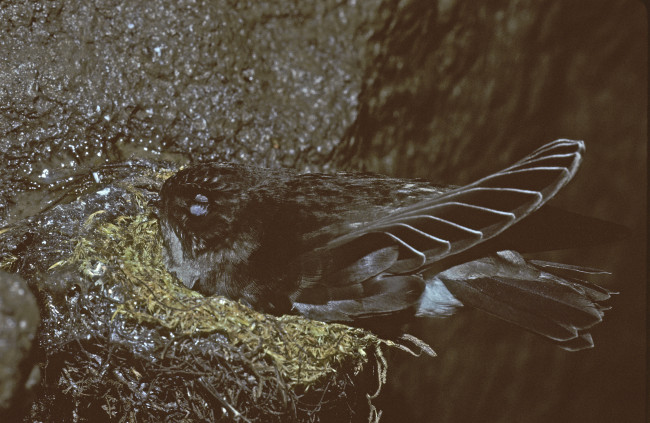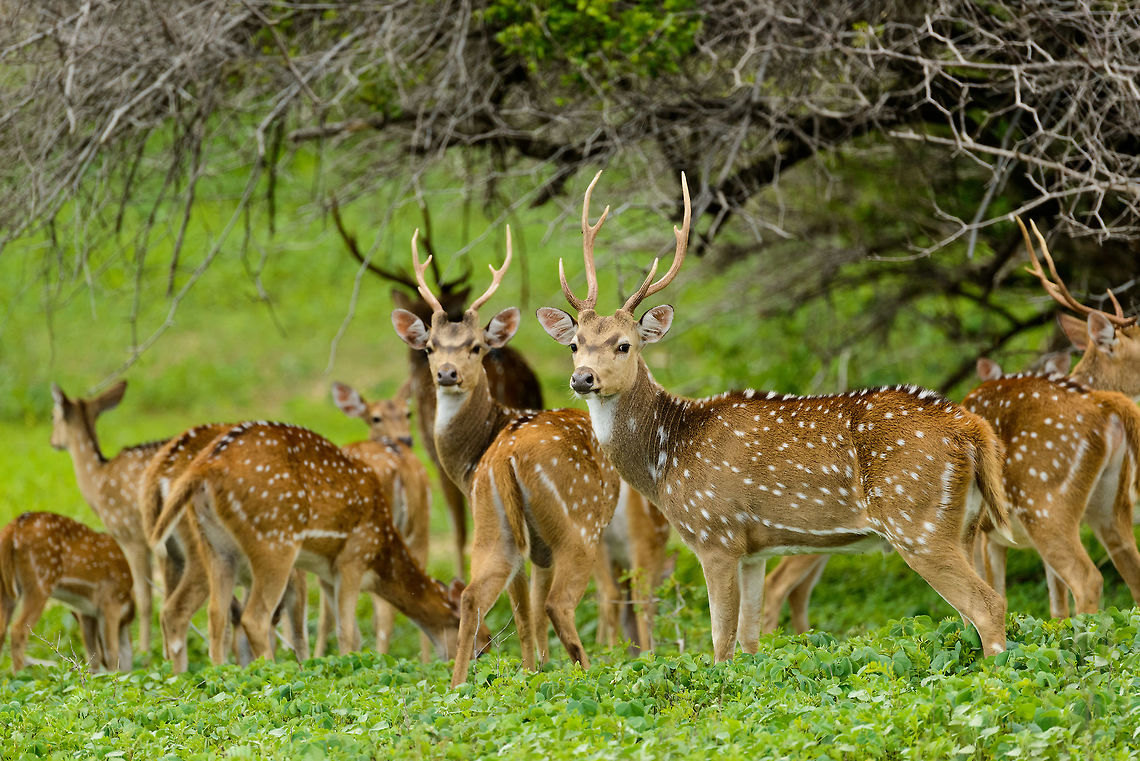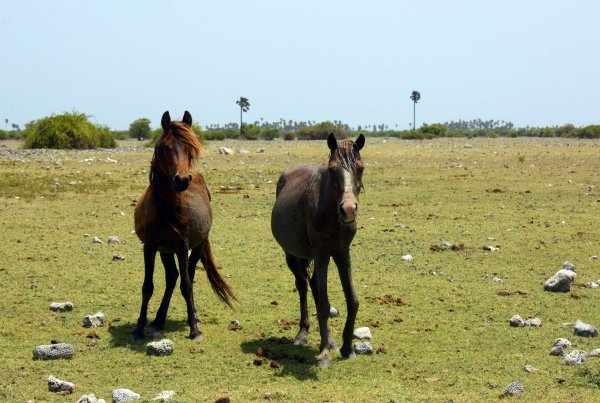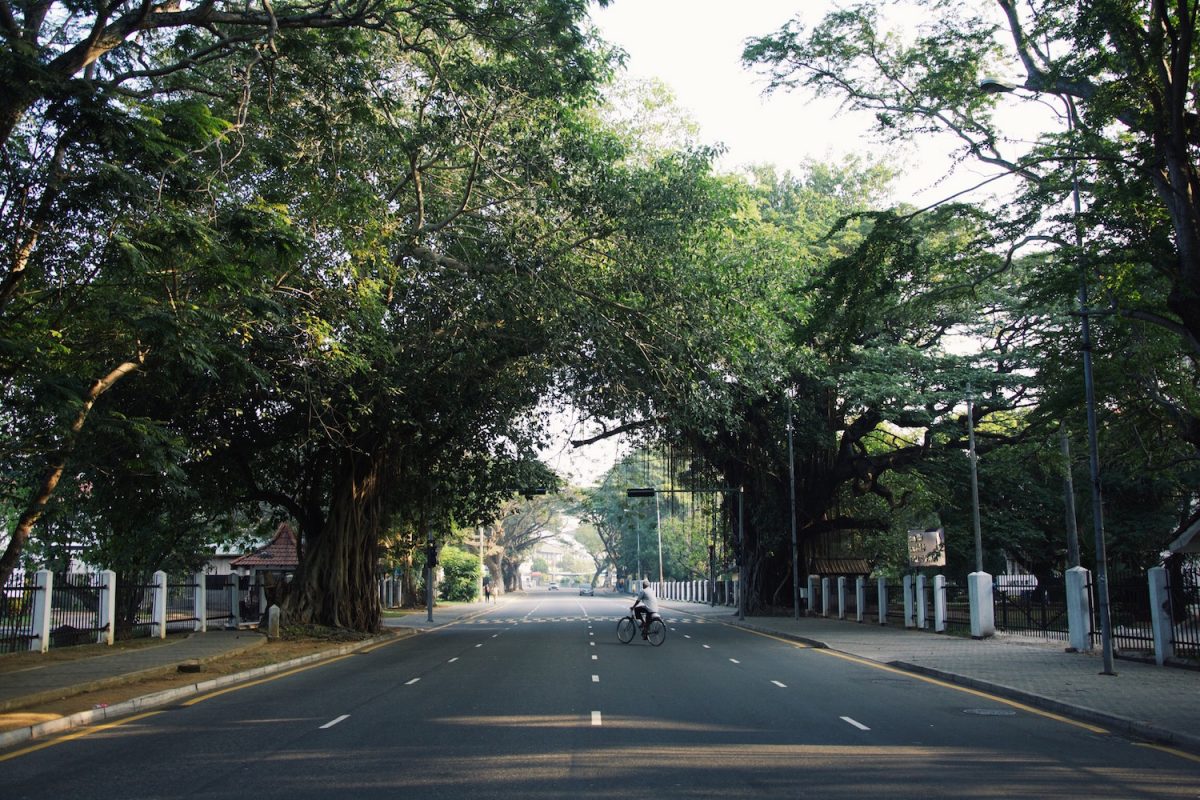
The Indian Swiftlet (collocalia unicolor) is only about 12 cm long, and can be found in Sri Lanka and South West India. The nests these birds make are highly priced and prized, and are a delicacy in Far East Asia, to be used in soups, desserts and medicine. This has led to a sinister trade in edible bird nests, where the nests are processed and sold on the market – disturbingly, the trend has now entered the West, with over 60% of sales now concentrated in the United States and Europe.
What Are Edible Birds’ Nests?
The Indian Swiftlet builds these nests, which are barely longer than its body, on a vertical surface over a period of 2 – 3 months. It is constructed primarily using its own saliva, which fortifies the nest: it is this hardened saliva that is sought after. The nests are processed of all vegetable and foreign matter, and the white husk of hardened saliva is smuggled out of the country and sold.

A nesting swiftlet. The birds are cruelly evicted from their nests when the nests are removed to be sold. Image Credit: speakupforthevoiceless.org
There are only five species in the world that build such nests, and only two of these species build white nests, which are of the highest quality. The Indian Swiftlets of Sri Lanka are one of these two species. These birds also have two breeding seasons, January to May being the primary season, and the second from August to October.
According to environmentalist and lawyer, Jagath Gunewardena, once the nests are moved, the birds will not build the nests for a second time during the season. It would seem that they have exhausted their resources to do so.
These birds are also invaluable to farmers as they are insectivorous and feed on insects considered to be pests and harmful to crops, like planthoppers. They also hunt late in the evening and feed on insects that emerge at dusk, including mosquitoes, and thereby maintain the delicate balance of the ecosystem.
In order to facilitate the edible bird nest trade, the nests are often scraped off cave walls using blunt instruments, while the eggs are dashed or chicks thrown to the ground and left to be consumed by ants.
Why Is It So Popular?
A simple Google search will highlight just how popular this trade is. The first results will include edible birds’ nests “with chow mein” “recipes” “shredded wheat” and “rice krispies.” There are also plenty of websites dedicated to the sale and consumption of the nests. That said, it is also referred to as “the caviar of the East” and is supposed to have medicinal and aphrodisiac qualities – claims which no research, to date, is able to substantiate.
Edible birds’ nests are one of the most expensive tonics or delicacies on the Chinese market. The fact remains, however, that while the saliva of the bird contains proteins, it is of a class of micro-proteins, as Jagath Gunewardena explained, which have very little amino acids and therefore, no nutrients. He also noted that as the white husk is insoluble in water, it has to be boiled at high temperatures; and as a result, it loses its supposed nutritional properties. The husks are also crushed and incorporated into various food items, including, bizarrely enough, candy.

Processed swiftlet nests, ready for cooking. Image Credit: therakyatpost.com
The trade is also popular in countries like Malaysia, where it has taken on a different dimension entirely, with several people attempting a domesticated trade of sorts.
The Trade
Gunewardena has been keeping a keen eye on the trade for the past 23 years, ever since the issue cropped up way back in 1993. It was then realised that the trade has an international dimension, when the Sri Lanka Customs caught a consignment in 1993. Since then, the trade has raised its ugly head from time to time, quietening when consignments are found and when law enforcement authorities are vigilant. The trade itself is rather haphazard, and looms when the law enforcers have relaxed their vigilance.
Over the past few years, in 2012, 2013 and 2014, the trade was regular, but died down in 2015. This year, however, has seen the exposure of a massive racket in the trade, where nests built in the tunnel of the Hatton-Singimale railway line were broken. It was reported by both railway employees and residents living in the vicinity.
The trade was, primarily, concentrated in the Far-East, but as Gunewardena pointed out, the trade has now caught up in the United States and Europe, which account for 60% of the trade. Far Eastern countries like China and Taiwan, at this point, only account for 7 – 8% of the trade, while the remaining are smuggled to various other locations in the world.
Perhaps one can point the finger at globalisation – there are Chinese restaurants all over the world now, which would account for how this trade has expanded to countries beyond the Far East.
Edible birds’ nests are, furthermore, not consumed locally. It is mainly used for the export trade, although there may be a small local market.
What The Law Says
The birds are protected under Section 31 of the Fauna and Flora Protection Ordinance; therefore, anyone who collects, transports, keeps in custody, or tries to sell the nests is committing an offense and can be arrested without a warrant. If found guilty, they can be punished by a fine or imprisoned, or both fined and imprisoned. The Department of Wildlife Conservation, the Police, and the Forest Department can facilitate the arrests. The nests are not a legal item to export, therefore all products and nests are illegal. The Customs is empowered under Section 40 of the Fauna and Flora Protection Ordinance to take legal action, in addition to the punishments meted out by the Customs for false declarations, among other offenses.
It can be observed that this trade is insidious on many levels – not only does it topple the delicate balance of the ecosystem and expose crops to harmful insects, but it is also fundamentally cruel: helpless, unable to find a vertical perch of any sort, the chicks are left to suffer a slow, painful death, at the mercy of ants who consume them even while alive.







